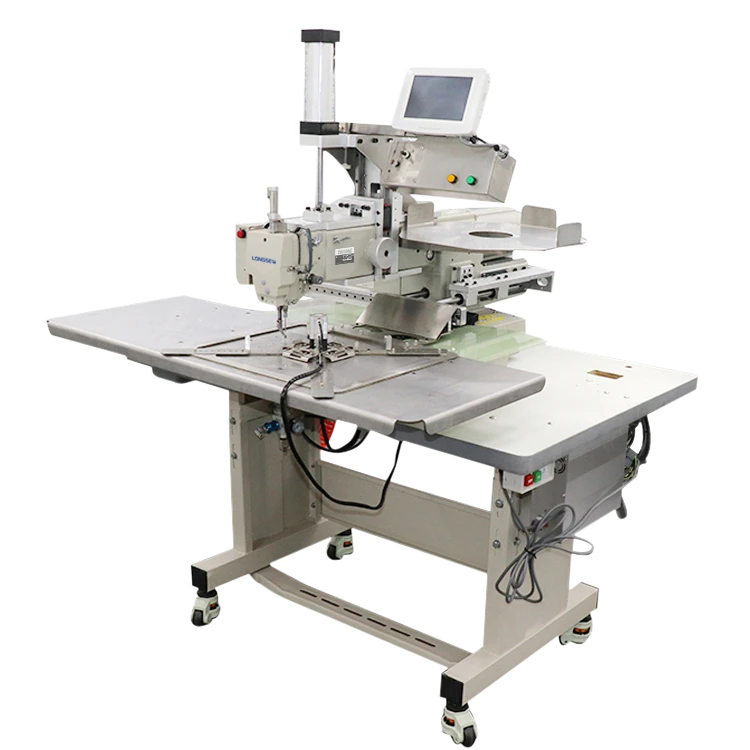How to Sew Leather Using a Standard Sewing Machine Effectively and Safely
Sewing Leather with a Regular Sewing Machine A Comprehensive Guide
Sewing leather has traditionally been viewed as a task reserved for specialized industrial machines due to the toughness and thickness of the material. However, many enthusiasts and DIYers may not have access to such equipment and wonder if they can achieve quality leather seams using a regular sewing machine. The good news is that it is entirely possible to sew leather with a standard sewing machine, provided you take the right steps, use the appropriate materials, and employ a bit of care. Here’s how you can successfully navigate the process.
Choosing the Right Leather
The first step in sewing leather with a regular sewing machine is selecting the right type of leather. For beginners, it’s advisable to start with softer, thinner leather such as lambskin or lightweight suede. These materials are more forgiving and easier to sew than heavyweight tools like full-grain leather or vegetable-tanned leather. Once you gain confidence in your skills, you can gradually move on to thicker hides.
Preparing Your Sewing Machine
Before you start sewing, you need to prepare your sewing machine. Here are some key modifications and tools you will need
1. Needle Swap out your standard needle for a leather needle. Leather needles have a wedge-shaped point that helps to pierce through the thick material without causing damage. A size 90/14 or 100/16 needle is typically suitable for most types of leather.
2. Thread Use heavier thread designed for leather work. Polyester thread is a great choice as it’s strong, durable, and can withstand the stress leather projects often endure. Avoid cotton thread, as it may not hold up well under tension.
3. Walking Foot If possible, use a walking foot attachment. This is especially important when sewing thicker leather pieces, as it helps feed the material evenly through the machine, preventing it from shifting or bunching.
4. Tension Settings Adjust the tension settings on your sewing machine. It may require some experimentation, but generally, you may need to increase the top tension slightly to accommodate the thickness of the leather.
Cutting and Marking
sew leather with regular sewing machine

Cutting leather requires precision and care. Use a rotary cutter or a sharp utility knife, along with a cutting mat, to achieve clean edges. When marking the leather, opt for tailor's chalk or a specialized leather marking tool to ensure you can clearly see your guidelines without damaging the material.
Stitching Technique
When you start sewing, remember to go slow and steady. Leather is unforgiving of mistakes, so take your time to ensure your stitches are even and straight. Here are some tips
- Seam Allowance Leave enough seam allowance—typically 1/4 inch to 1/2 inch— depending on the thickness of your leather and the project’s requirements.
- Backstitching Be sure to backstitch at the beginning and end of your seams to secure the threads and prevent unraveling.
- Avoid Pins Instead of using pins, which can leave holes in leather, consider using binder clips or double-sided tape to hold pieces together while sewing.
Finishing Touches
Once you’ve completed your stitching, finish the raw edges to prevent fraying. You can use products like edge paint, burnishing tools, or simply trim the edges neatly and give them a light sand to smooth them out.
Conclusion
Sewing leather with a regular sewing machine may seem daunting at first, but with the right materials, tools, and techniques, it's a highly rewarding endeavor. Whether you're making personalized wallets, bags, or home decor items, the satisfaction that comes from creating something with your own hands is unmatched. So gather your supplies, take a deep breath, and embark on your leather crafting journey!
-
Industrial Cylinder Arm Sewing Machine: Revolutionizing Heavy-Duty SewingNewsJul.28,2025
-
Cylinder Arm Sewing Machine: Perfect for Special Sewing ApplicationsNewsJul.28,2025
-
Cylinder Bed Sewing Machine: Essential for Sewing Complex MaterialsNewsJul.28,2025
-
Heavy Duty Sewing Machine: The Essential Tool for Industrial ApplicationsNewsJul.28,2025
-
Computerized Pattern Sewing Machine: Revolutionizing Precision StitchingNewsJul.28,2025
-
Heavy Duty Industrial Sewing Machine: Power Meets PrecisionNewsJul.28,2025
-
Leather Sewing Machine: The Industrial Standard for Tough MaterialsNewsJul.18,2025





























